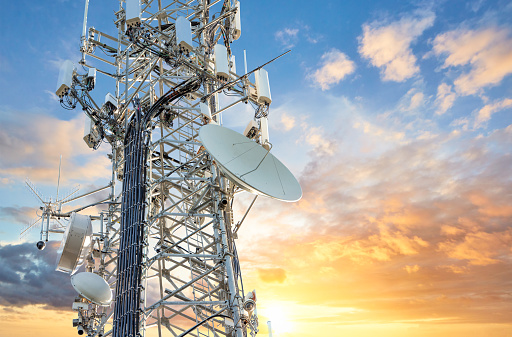If you've ever been through a town and spotted tiny mini 5G cell towers placed on poles for street lighting. They appear like tiny boxes however they're actually sending wireless signals from mobile providers to your mobile.
They are replacing larger, purpose-built cell towers. While safe distance to live from cell phone tower 're not as noticeable however, they could create problems for those who live nearby.
A of the FCC's Radiation Exposure Thresholds
The FCC's Radiation Exposure Thresholds determine the safe distance that a person can be exposed to electromagnetic energy generated by wireless devices. The exposure limits are based upon scientific research which show that the energy of RF could be harmful to human health.
The rate of absorption called the specific absorption rate (SAR) is an indication of the radiofrequency energy absorption by tissues. It's typically 1.6 watts per kilogram, averaged over one gram of tissue.

But, since 5g operates at higher frequencies, it has the potential to create more energy on the skin and other exposed body areas. This can lead to various potential harms, including exacerbated the development of skin conditions like dermatitis, cancer of the skin and cataracts.
Due to the potential for negative effects of 5G radiation, PSU has chosen to set a general localized limits on power density, which is 4mW/cm2 measured on 1cm2, and not to exceed 30 minutes for all 5G services at 3000 GHz. This localized limit is consistent with the maximum spatial-average SAR of 1.6 W/kg, averaged over one grams of tissues at six GHz.
The FCC's Maximum Exposure Thresholds
In the event that you've used mobile phone, you're probably aware that the safest range from the tower should be at least 400 meters. This is due to the power of transmission from the cell tower is significantly increased the further you are from it.
While what is a safe distance from a cell tower sounds like an ideal idea, the reality is that those living close to towers may actually be more prone to health problems. For instance, a study conducted in 2014 in India found that residents who lived within 50m of cell towers experienced much more health problems than those who lived farther distance from them.
But, the study found that people who moved to areas that were further from cell towers experienced their symptoms improve within a few days. Another study has revealed that exposure to high amounts of electromagnetic field radiofrequency (EMFs) could cause cancer, brain tumors, and other health problems.
This is because RF radiation, which is used in wireless communication can penetrate the human body's exterior layer, which is the skin. This is important to understand because the skin acts as a protective barrier against injury to the body, infection by pathogenic microorganisms, and entry of toxic substances. The skin is the most important organ of the human body. It is accountable for keeping the integrity of other organs.
The FCC's Minimum Exposure Thresholds for the Minimum Exposure
The FCC's Minimum Exposition Thresholds are based upon many assumptions that aren't supported by scientific research. They include the incorrect assumption that short-term exposures to RF radiation are safe due to the limited penetration into the body (i.e., tissue heating).
what is a safe distance from a 5g cell tower ignores the more extensive penetration of ELF parts of the modulated RF signal and the consequences of brief bursts of heat caused by RF pulses. These assumptions are not in line with the current understanding of biological consequences of RF radiation. As such they shouldn't be considered for health protection exposure standards.
Furthermore there is the fact that both ICNIRP and FCC restrict their maximum exposure limits to local peak SARs based on the maximum speed of spatial absorption (psSAR), which can be described as not a reliable dosimetric instrument to determine the degree of radiation exposure. Particularly, psSAR is inaccurate for frequencies above 6 GHz. Additionally, psSAR hasn't been evaluated for RF radiation that is exposed to other environmental agents such like sunlight. Interactions of RF radiation with other agents in the environment could result in antagonistic or synergistic effects. This can lead to an increased risk of negative health effects. For example, co-exposure to RF radiation with sunlight may raise the chance of developing skin cancer and exacerbate other skin disorders, such as acne.
